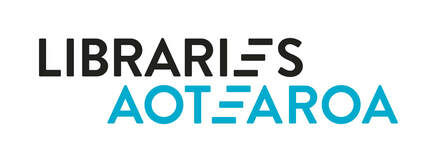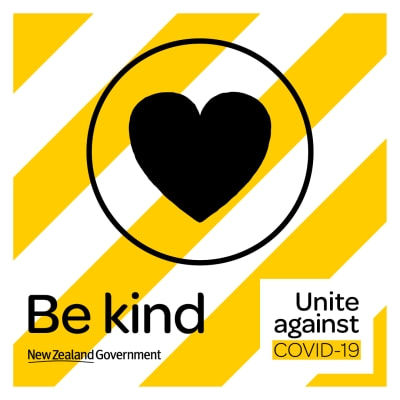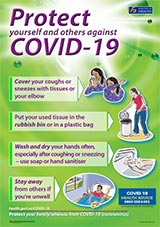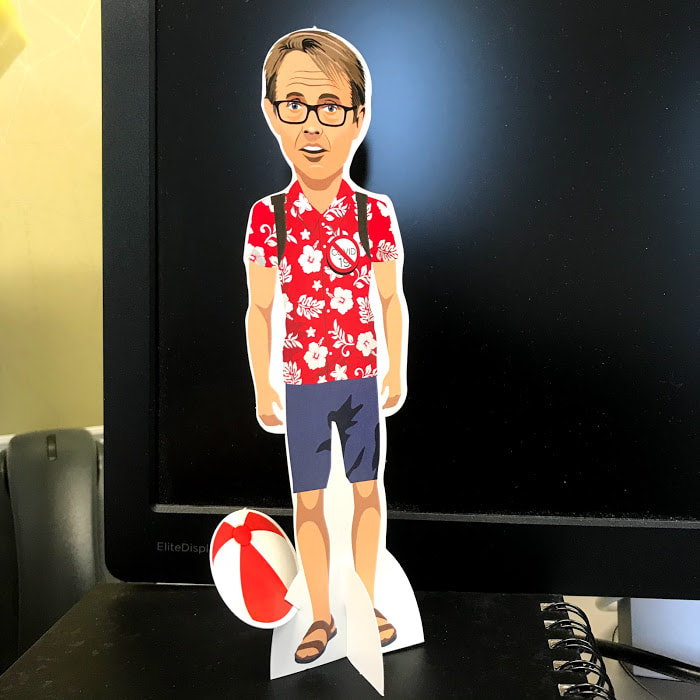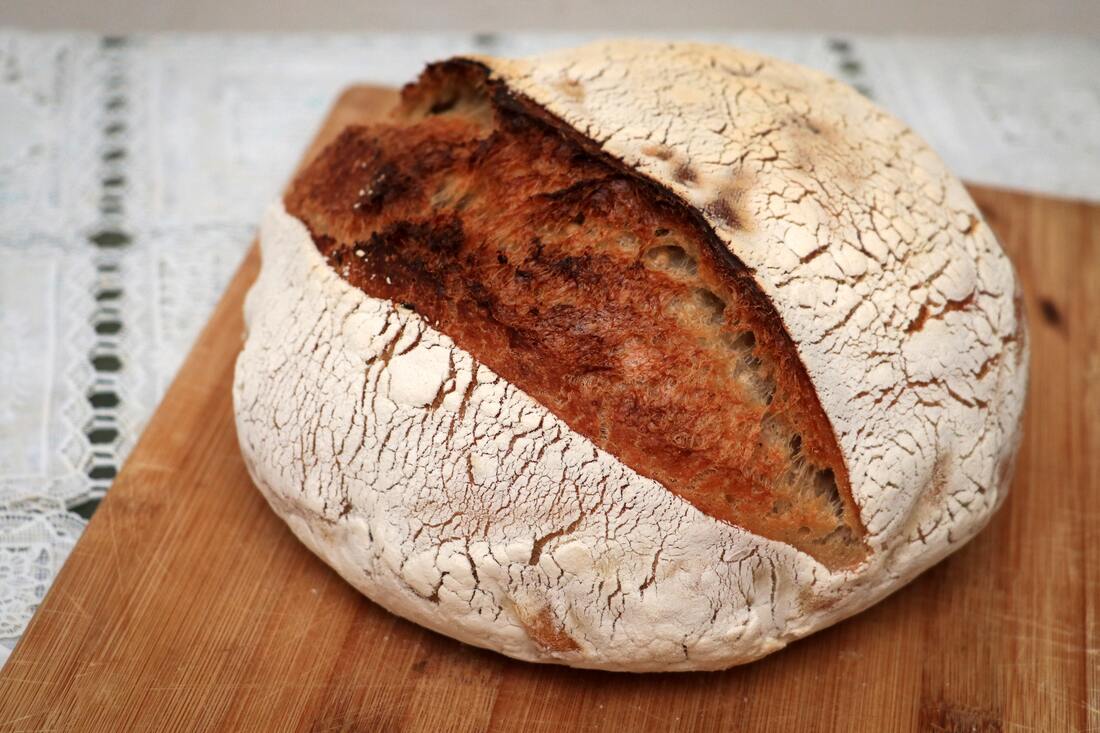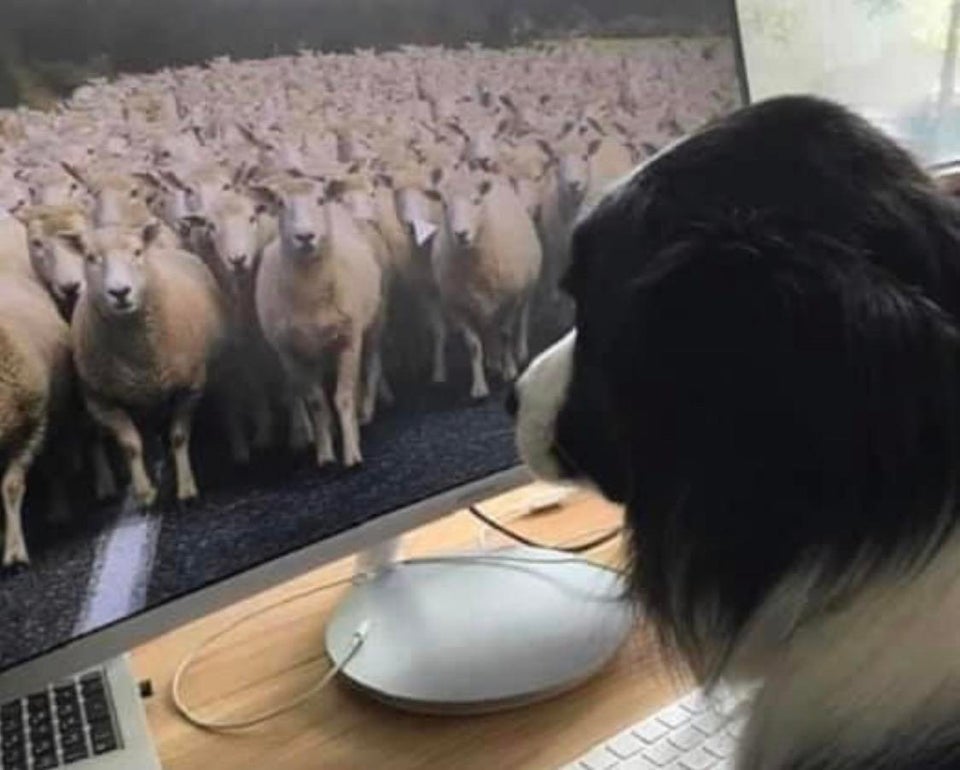Collecting in the Time of COVID-19
Back in May of this year, LIANZA hosted an online meetup: Collecting in a time of COVID-19. About 75 members of New Zealand’s GLAM sector met to discuss contemporary collecting in the time of COVID-19. The aim of the session was to find out what New Zealand GLAMs (Galleries, Libraries, Archives and Museums) are doing or planning to do to document the national and local response to the pandemic. The session was facilitated by Victoria Passau, Collection Manager Online Cenotaph at Auckland Museum.
While a number of institutions have undertaken contemporary collecting, over the past decade, in response to events such as the Christchurch mosque attacks, Tasman fires, the earthquakes in Canterbury and Kaikoura as well as the Women's March, it is still a relatively new practice for some in the New Zealand GLAM sector. This meetup was a great opportunity for the sector to share their experiences, during COVID and to consider the successes, failures and fish-hooks of rapid response collecting. The diversity of attendees and the level of engagement showed a real opportunity for creating a series of meetups that consider contemporary collecting across the GLAM sector.
As a follow-up, Helen Heath spoke to Gillian Lee, Coordinator, Web Archives at Alexander Turnbull Library and Rhonda Grantham, Legal Deposit Librarian at National Library of New Zealand about their collecting response to COVID-19.
While a number of institutions have undertaken contemporary collecting, over the past decade, in response to events such as the Christchurch mosque attacks, Tasman fires, the earthquakes in Canterbury and Kaikoura as well as the Women's March, it is still a relatively new practice for some in the New Zealand GLAM sector. This meetup was a great opportunity for the sector to share their experiences, during COVID and to consider the successes, failures and fish-hooks of rapid response collecting. The diversity of attendees and the level of engagement showed a real opportunity for creating a series of meetups that consider contemporary collecting across the GLAM sector.
As a follow-up, Helen Heath spoke to Gillian Lee, Coordinator, Web Archives at Alexander Turnbull Library and Rhonda Grantham, Legal Deposit Librarian at National Library of New Zealand about their collecting response to COVID-19.
|
Kia ora Gillian and Rhonda and thanks so much for talking with Library Life! It was great to see your team profiled on Radio New Zealand recently, we were curious to find out more. Firstly, when did your team begin harvesting COVID-19 items?
We began on March 2, 2020 (the New Zealand Ministry of Health confirmed our first case of COVID-19 on February 28, 2020). Wow, that was quick! Gillian: Even before the announcement we were searching the internet to find out how New Zealanders were responding to the pandemic. We looked at our collecting areas – government, community, arts, science, and so on to see what conversations were taking place. We re-harvested websites and blogs and collected new ones. ‘Unite Against COVID-19’ was a key government response as we went into different alert levels. So, of course, we were picking that up. Rhonda: From a publications point of view, it’s a very similar process. We subscribe to numerous alert services, newsletters and other things. So, in terms of documents and publications that were turning up – we were receiving all those alerts and notifications – starting to collect them, just as we would normally collect. |
|
Gillian: It was business as usual to start with – but a new event. While we focussed on our areas of collecting we were very aware that COVID-19 was affecting everyone and there was no way we could keep up with the avalanche of material. We needed all hands on deck to work out ways to collect content, especially social media. We knew that there are filter bubbles where you get emailed newsletters or memes sent to you because of the groups you participate in online. It took expertise from many parts of the library to collect content we hadn't previously collected – input from digital collecting specialists to build new harvesting tools. Digital archivists, curators, acquisitions librarians and research librarians to identify material. So, the collection is more than a web harvest? Yes, it includes websites and digital content from the web along with print/analogue materials. |
Can you describe the breadth of the collection?
We have collected websites; videos; digital publications like government reports; podcasts; memes; music; the science around it; you name it. We also targeted a wide range of social media content from as many platforms as possible, for example, Facebook; Instagram; Tiktok; Twitch; Twitter; Vimeo; and Youtube. Twitter is the most extensive of the social media sites we have collected because they have an API, so we captured Tweets that had hashtags and search terms related to COVID-19 in New Zealand.
There are also emailed newsletters from various businesses, government agencies, charities, etc affected at the time. Then there is our collection of print ephemera which includes COVID-19 posters and brochures. That’s the rapid response part.
We expect ongoing donations of print, photographs and digital materials as curators reach out to donors – the long tail part of collecting! It’s not exhaustive, it’s representative.
As we collected content some themes emerged. There were a lot of event cancellations – the music industry was shutting down events left, right and centre. We also noticed the fake news or misinformation (news media items about it and people tweeting about it). We saw some businesses respond to the pandemic by switching from alcohol production to hand sanitiser. Garment industries started producing face masks. New businesses emerged and adapted to online services. Lockdown provided opportunities for online humour (memes) and a sense of community (the New Zealand bear hunt)
We have collected websites; videos; digital publications like government reports; podcasts; memes; music; the science around it; you name it. We also targeted a wide range of social media content from as many platforms as possible, for example, Facebook; Instagram; Tiktok; Twitch; Twitter; Vimeo; and Youtube. Twitter is the most extensive of the social media sites we have collected because they have an API, so we captured Tweets that had hashtags and search terms related to COVID-19 in New Zealand.
There are also emailed newsletters from various businesses, government agencies, charities, etc affected at the time. Then there is our collection of print ephemera which includes COVID-19 posters and brochures. That’s the rapid response part.
We expect ongoing donations of print, photographs and digital materials as curators reach out to donors – the long tail part of collecting! It’s not exhaustive, it’s representative.
As we collected content some themes emerged. There were a lot of event cancellations – the music industry was shutting down events left, right and centre. We also noticed the fake news or misinformation (news media items about it and people tweeting about it). We saw some businesses respond to the pandemic by switching from alcohol production to hand sanitiser. Garment industries started producing face masks. New businesses emerged and adapted to online services. Lockdown provided opportunities for online humour (memes) and a sense of community (the New Zealand bear hunt)
How do you go about collecting items?
We established a three-phase approach to manage collecting activity:
Do you have a COVID-19 collecting plan?
We have collecting plans in general and COVID became part of that. We got together a team of people who collect online content and discussed what our focus should be for the rapid response phase. We looked online for new content specifically about COVID-19 but, since everyone was affected, we found plenty of content in areas we were already collecting in – music, government, sports, communities, etc which provided a representative sample across a wide range of society. We did find new formats to collect such as emails, memes, and streaming music.
What should a collecting plan have in it?
We have a number of collecting plans. The plan that the New Zealand Published Collections currently look to is this one but we are about to update our policy early next year.
When you develop a collecting plan you need to look at the purpose of that plan; the scope; the collection’s strengths and priorities; and collecting principles. That’s a basic summary of what you’d expect to find in a collecting plan, regardless of what institution you are part of.
We established a three-phase approach to manage collecting activity:
- Rapid response acquisition of openly accessible online material, which you can read about on the National Library blog and on the International Internet Preservation Consortium blog, which is specifically about websites for the web archiving community.
- Providing information and ideas for the community to capture and record their own experiences like saving your social media.
- A general call for collecting of COVID-19 related material from the public, both physical and born-digital
Do you have a COVID-19 collecting plan?
We have collecting plans in general and COVID became part of that. We got together a team of people who collect online content and discussed what our focus should be for the rapid response phase. We looked online for new content specifically about COVID-19 but, since everyone was affected, we found plenty of content in areas we were already collecting in – music, government, sports, communities, etc which provided a representative sample across a wide range of society. We did find new formats to collect such as emails, memes, and streaming music.
What should a collecting plan have in it?
We have a number of collecting plans. The plan that the New Zealand Published Collections currently look to is this one but we are about to update our policy early next year.
When you develop a collecting plan you need to look at the purpose of that plan; the scope; the collection’s strengths and priorities; and collecting principles. That’s a basic summary of what you’d expect to find in a collecting plan, regardless of what institution you are part of.
People were feeling vulnerable when you started collecting, how do you sensitively deal with people’s feelings when collecting?
Publicly available online content in scope for Legal Deposit can be crawled without seeking permission. During times of crisis, this can be quite helpful as it means we can collect content without disturbing people who might be grieving and need their space. We are aware that some online content could be personal (especially social media) so we focus on content that is intended to be distributed widely. We don’t collect everything.
We then promote the idea of people preserving their own, personal, records and provide the option of approaching the library to donate their materials. This is done mainly via library blogs or in the media. It’s a less intrusive approach. As time goes by, we might become aware of potential donor material and approach people directly.
What are the best practices/ethics of rapid-response collecting?
If it’s a traumatic time the last thing you want to do is contact people and ask if we can collect their content when they may need space. So we harvest online content first before it disappears (Legal Deposit allows us to do this). Then when sufficient time has passed we can open up discussions with content owners if this is appropriate.
Publicly available online content in scope for Legal Deposit can be crawled without seeking permission. During times of crisis, this can be quite helpful as it means we can collect content without disturbing people who might be grieving and need their space. We are aware that some online content could be personal (especially social media) so we focus on content that is intended to be distributed widely. We don’t collect everything.
We then promote the idea of people preserving their own, personal, records and provide the option of approaching the library to donate their materials. This is done mainly via library blogs or in the media. It’s a less intrusive approach. As time goes by, we might become aware of potential donor material and approach people directly.
What are the best practices/ethics of rapid-response collecting?
If it’s a traumatic time the last thing you want to do is contact people and ask if we can collect their content when they may need space. So we harvest online content first before it disappears (Legal Deposit allows us to do this). Then when sufficient time has passed we can open up discussions with content owners if this is appropriate.
|
What are your favourite items in the collection to date? So many to choose from! A video meme of Jacinda dancing riffing off the scene in the movie Love Actually. And the photo meme of a dog in lockdown rounding up sheep it can see on a laptop! It was in te reo as well as English. What’s the strangest or funniest item you have collected? I think that has to be a small cardboard cutout of Ashley Bloomfield in summer gear. It was a real estate promo and my colleague has one on her desk – the other is in the ephemera collection!! It’s a shame that you can’t collect sourdough bugs! I’ve heard there actually is a sourdough bug library in Belgium. On a more serious note, how do you practice inclusive collecting? We have connections within the library that reach out to various groups to ensure we are collecting content that reflects all New Zealanders, but we want to do more in this space as we know some groups have been either underrepresented or absent from our collections. It is also a matter of staff representation – having a diverse workforce that can have input as well. We’re very excited that a new position has been created in the Alexander Turnbull Library for a Curator Contemporary Voices and Archives. |
|
How do we better represent vulnerable populations?
By having collection items that reflect their voices. By talking to people and including them in the process. It involves talking about how we care for the collections, finding out what people are comfortable donating as well as what we make available and how we do this. This might be through donor agreements or ensuring appropriate access to published materials. That’s easier to do when we’re talking about individual donations. It may also be appropriate not to collect content but assist people to preserve their own content or set up their own community archives. Collecting bulk digital items is trickier, but much of this content is designed for people to read online, so by collecting it, we are including the voices of the vulnerable. What sort of stories do you think the collection is telling about New Zealand’s COVID experience? Everyday experiences from ordinary people as well as well-known people. |
We’re hoping everyone will be able to see familiar stories that they can relate to in this collection. It will be a record for future generations so they can learn about what we went through during this time. We noticed for example that a number of people who used to blog but had been quiet for time suddenly resumed blogging again about their lockdown experiences. We’re also collecting the government’s response to the pandemic.
I noticed a resurgence in blogging! Do you have any theories about that?
Gillian: People see them as online diaries. Often people are into Instagram snapshots but this experience prompted more reflections that people wanted to write about – not just take photos. Blogging lends itself to that kind of writing. All those stories people had about baking and how there wasn’t enough flour in the shops, the panic.
Rhonda: People also had more time to reflect on their lives. I think people thought, “I’m in the middle of a really interesting event and I don’t want to look back and not have anything to show for this time”.
I noticed a resurgence in blogging! Do you have any theories about that?
Gillian: People see them as online diaries. Often people are into Instagram snapshots but this experience prompted more reflections that people wanted to write about – not just take photos. Blogging lends itself to that kind of writing. All those stories people had about baking and how there wasn’t enough flour in the shops, the panic.
Rhonda: People also had more time to reflect on their lives. I think people thought, “I’m in the middle of a really interesting event and I don’t want to look back and not have anything to show for this time”.
|
Can you explain about licensing and reuse?
Tricky! Legal Deposit gives us the right to make a copy of published New Zealand publications, but content owners still retain copyright over their works (and in some cases social media platforms retain some copyright as well). So, the legislation allows us to provide access to content, but the public still has to abide by copyright laws when it comes to reusing. In these cases, they need to approach the copyright holders if they need to license or reuse material. What was your biggest challenge? With web harvesting, it was trying to keep up with constantly changing web pages as alert levels changed. For example, with the Unite Against COVID-19 website, one of the people that was maintaining that website said to us that they were updating some pages up to 20 times a day. There’s no way we can keep up with that pace of change but we were capturing the site regularly and they keep those changed pages as part of the public record. There were some technical issues, in that there are some websites or web content we just can’t harvest depending on the platform they’re on. |
We also had practical issues related to lockdown and working from home – the same issues as anyone else – child care, slower internet speeds, etc. Also, sometimes we were ‘over COVID-19,’ but still had to collect the content, so it felt like you couldn’t get away from it.
Can you say a little about the aftercare of the collection?
In terms of preservation, we have ongoing care of collection items in perpetuity whether digital or analogue. We have a conservation department that looks after the physical materials. Then we have the National Heritage Digital Archive (NDHA) team who make sure the digital items are preserved. We are a trusted repository for digital items so we need to have conversations with publishers, creators, donors about how the items are cared for once they are in our collections. We also need to have conversations with them about the kind of access they want to provide.
Obviously, with Legal Deposit, there are legal requirements around access but you can still provide some kinds of limitations around access if people are concerned about privacy – you can restrict access to them in the reading rooms. If you are doing a large Twitter crawl and come across material created by someone using a pseudonym you don’t necessarily know how to contact that creator to ask permission for use. Some items, like memes, need investigations into who actually owns the content – it’s not always easy!
Rhonda: As a collector, if I’m hearing words like ‘Private’ then the item is going outside of the scope of Legal Deposit. We’d be looking to acquire that material differently. For some of the items we’ve been collecting (especially off of social media), they are new things we haven’t taken before, so there is a lot of experimentation in terms of the collecting and the preservation as well. So even getting them into the NDHA can be a challenge.
Gillian: We have just hired someone on a two-year contract as a COVID-19 digital archivist. So, a lot of the rapid collecting we did outside of the normal harvesting that we do, has all gone into a pre-preservation area and the digital archivist will be analysing that content to see how we can ingest it and if there are any issues around finding owners. So there is pre-care and aftercare.
In terms of descriptions, Resource Description and Access or Encoded Archival Description records are created to enhance retrieval of items of interest and are updated when necessary.
Wow, there is so much to think about. Is there anything else you’d like to add?
We’d like to acknowledge the other members of the COVID-19 Social Media Collecting Group: Valerie Love, Senior Digital Archivist; Amy Joseph, Team Leader Collection Development; Svetlana Koroteeva, Technologist; Ben O’Brien, Digital Preservation Web Engineer/Technologist; Flora Feltham, Digital Archivist; Hannah Benbow, Research Librarian Cartoons; Jay Gattuso, Technologist; Sholto Duncan, Web Archivist; and Susanna Joe, Web Archivist. This gives you an idea of the people and expertise we needed!
Thanks so much for sharing your work with our readers. I hope you get a break from COVID over the summer!
Can you say a little about the aftercare of the collection?
In terms of preservation, we have ongoing care of collection items in perpetuity whether digital or analogue. We have a conservation department that looks after the physical materials. Then we have the National Heritage Digital Archive (NDHA) team who make sure the digital items are preserved. We are a trusted repository for digital items so we need to have conversations with publishers, creators, donors about how the items are cared for once they are in our collections. We also need to have conversations with them about the kind of access they want to provide.
Obviously, with Legal Deposit, there are legal requirements around access but you can still provide some kinds of limitations around access if people are concerned about privacy – you can restrict access to them in the reading rooms. If you are doing a large Twitter crawl and come across material created by someone using a pseudonym you don’t necessarily know how to contact that creator to ask permission for use. Some items, like memes, need investigations into who actually owns the content – it’s not always easy!
Rhonda: As a collector, if I’m hearing words like ‘Private’ then the item is going outside of the scope of Legal Deposit. We’d be looking to acquire that material differently. For some of the items we’ve been collecting (especially off of social media), they are new things we haven’t taken before, so there is a lot of experimentation in terms of the collecting and the preservation as well. So even getting them into the NDHA can be a challenge.
Gillian: We have just hired someone on a two-year contract as a COVID-19 digital archivist. So, a lot of the rapid collecting we did outside of the normal harvesting that we do, has all gone into a pre-preservation area and the digital archivist will be analysing that content to see how we can ingest it and if there are any issues around finding owners. So there is pre-care and aftercare.
In terms of descriptions, Resource Description and Access or Encoded Archival Description records are created to enhance retrieval of items of interest and are updated when necessary.
Wow, there is so much to think about. Is there anything else you’d like to add?
We’d like to acknowledge the other members of the COVID-19 Social Media Collecting Group: Valerie Love, Senior Digital Archivist; Amy Joseph, Team Leader Collection Development; Svetlana Koroteeva, Technologist; Ben O’Brien, Digital Preservation Web Engineer/Technologist; Flora Feltham, Digital Archivist; Hannah Benbow, Research Librarian Cartoons; Jay Gattuso, Technologist; Sholto Duncan, Web Archivist; and Susanna Joe, Web Archivist. This gives you an idea of the people and expertise we needed!
Thanks so much for sharing your work with our readers. I hope you get a break from COVID over the summer!
